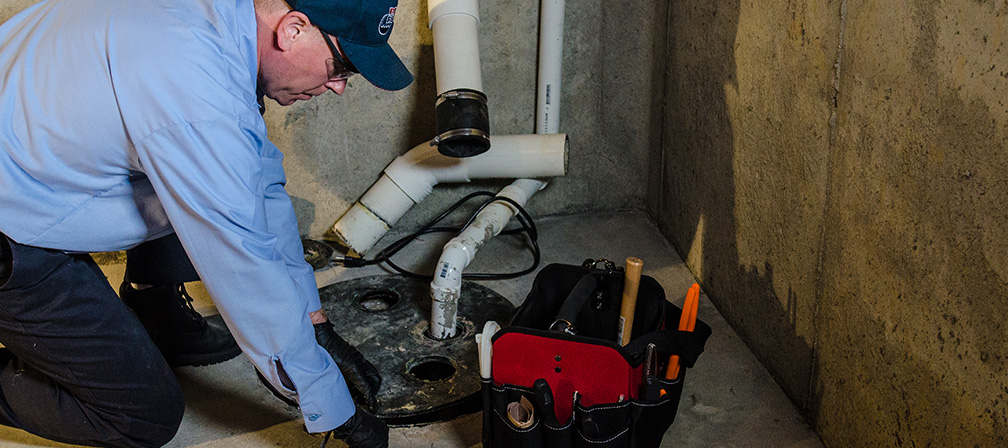They are making a few great observations on How to Care for Your Sump Pump overall in this content below.

Sump pumps are vital components in several homes, especially in areas susceptible to flooding or excessive moisture. They aid stop water damage by effectively getting rid of excess water from cellars or crawl spaces. Nevertheless, like any other appliance, sump pumps call for routine upkeep to guarantee they operate effectively when needed the most. Cleaning your sump pump is a crucial part of its upkeep, and understanding exactly how to do it properly can save you from costly fixings and potential calamities.
Intro
Maintaining a tidy sump pump is vital for its proper functioning and durability. Overlooking this essential task can bring about clogs, malfunctions, and ultimately, water damages to your building. Therefore, finding out just how to clean up a sump pump is critical for home owners that rely upon these devices to keep their cellars dry and safeguarded.
Indicators of a Dirty Sump Pump
Understanding when your sump pump needs cleaning is critical for stopping prospective malfunctions. Some common indicators that indicate a dirty sump pump consist of strange noises during operation, lowered water circulation, and visible debris in the pit. If you discover any of these signs and symptoms, it's essential to clean your sump pump promptly to prevent any type of more concerns.
Getting ready for Cleansing
Before you start cleansing your sump pump, it's vital to take some safety and security precautions. Beginning by shutting off the power to the pump to avoid any electric mishaps. Additionally, use ideal protective equipment, such as gloves and goggles, to safeguard on your own from dirt, debris, and possible microorganisms.
Recognizing the Sump Pump
Prior to diving right into the cleansing process, it's essential to have a fundamental understanding of how a sump pump functions. Typically installed in a pit or basin below the cellar floor, a sump pump contains several crucial elements, consisting of a pump, a float button, and a discharge pipeline. When water accumulates in the pit, the float switch activates the pump, which after that pumps the water out with the discharge pipeline, far from the building's foundation.
Step-by-step Overview to Cleansing a Sump Pump
Shutting down the Power
Begin by detaching the power supply to the sump pump to prevent any type of mishaps while cleansing.
Looking For Correct Functioning
Prior to reinstalling the pump, carry out a quick examination to make sure that the float button triggers the pump correctly. Pour some water into the sump pit and observe the pump's operation. If everything is functioning properly, you can reassemble the pump and reconnect the power supply.
Getting Rid Of Debris and Dust
Make use of a pail or a scoop to remove any type of visible particles, dust, or sediment from the sump pit. Dispose of the debris properly to avoid it from clogging the pump or the discharge pipe.
Cleansing the Pump and Float Change
As soon as the pit is clear of debris, carefully get rid of the pump from the pit. Evaluate the pump and the float button for any type of indicators of damages or wear. Use a soft brush or cloth to cleanse the surfaces and get rid of any collected gunk.
Purging the System
After cleansing the pump and float button, purge the sump pit with tidy water to eliminate any remaining dirt or sediment. This will certainly help make certain that the pump runs efficiently and efficiently.
Upkeep Tips to Maintain Your Sump Pump Clean
Along with routine cleansing, there are numerous upkeep pointers you can follow to maintain your sump pump in ideal condition:
Final thought
Cleansing your sump pump is a critical aspect of its maintenance and makes certain that it runs successfully when you require it the most. By complying with the actions detailed in this guide and incorporating regular upkeep into your regimen, you can extend the life-span of your sump pump and shield your home from water damage.
How To Inspect And Clean A Sump Pump
There are a few things you may want to look for when inspecting your sump pump. These include:
Leaks: If you notice any leaks around the sump pump, it likely needs to be repaired or replaced. Mud or Water: If there is any mud or water around the sump pump, it’s likely that it’s not working properly and needs to be cleaned. Noises: If you hear any strange noises coming from the sump pump, it may be indicative of a problem. Next, you’ll need to clean the sump pump. If you notice any of these issues, it’s best to clean the sump pump as soon as possible. To do this, you’ll need to remove the pump from its housing. Be sure to have a bucket handy to catch any water that may spill out. Once the pump is removed, use a brush or a spray nozzle to clean off all of the mud and debris. You may also want to check the impeller for damage or wear and tear. If you find any damage, you’ll need to replace the pump.
Once the pump is clean, reattach it to its housing and replace any parts that were removed. Be sure to test the pump before putting everything back in place. Once everything is back in order, put the cover back on the sump pit and refill it with water.
https://elekplumbing.com/blog/how-to-inspect-and-clean-a-sump-pump/

Hopefully you enjoyed our part on . Thanks a ton for taking a few minutes to browse our post. Loved our article? Please quickly share it. Help someone else discover it. I treasure reading our article about Cleaning & Maintenance Tips for Your Home's Sump Pump.
Rates